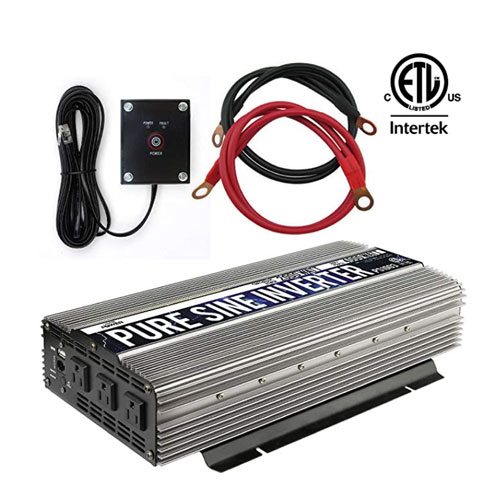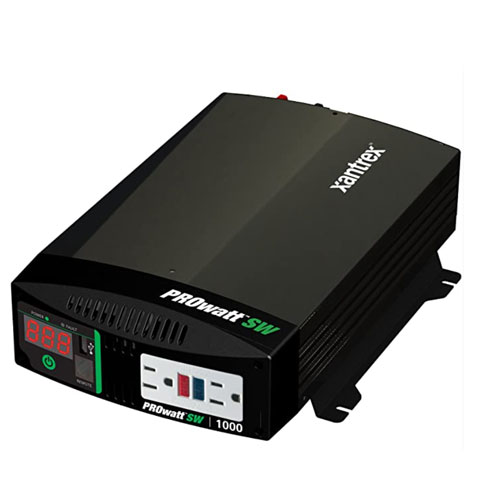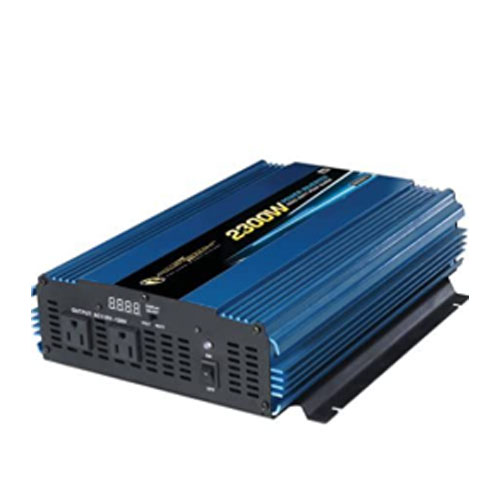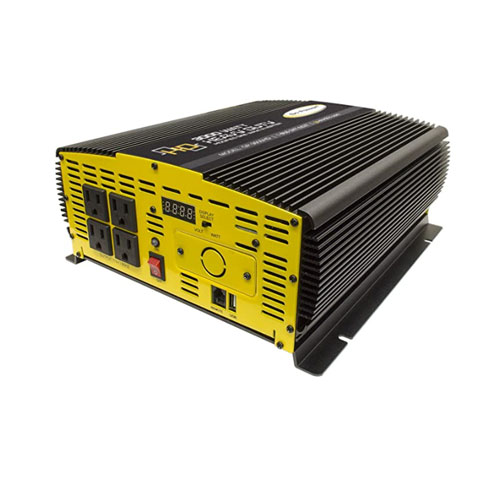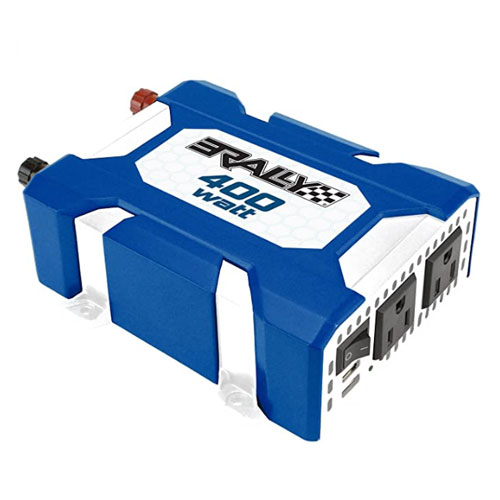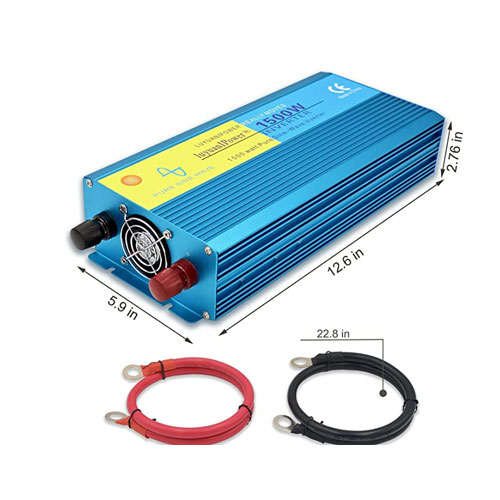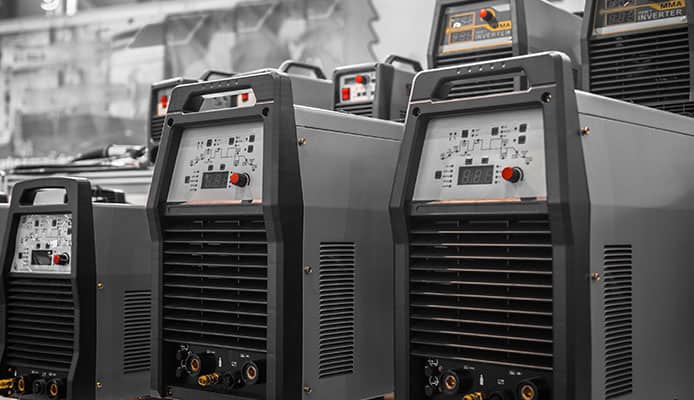
-
1.
-
2.
-
3.
-
4.
A power inverter is a handy piece of equipment to have on your boat. It converts DC power from your marine batteries to AC power giving you a safe and reliable power supply to power the electronic devices, entertainment systems and appliances you have on-board.
There is quite a choice of inverters on the market. To make your choice easier, we selected some excellent marine inverters with different power outputs and waveforms. To pick out the best boat inverter for your needs, go through our reviews and buying guide below where we break down the details.
OUR TOP PICK
GoWISE Power PS1003 2000W Pure Sine Wave
- Stand Out Features - Why We Love It
- A pure sine wave inverter safe for the most sensitive equipment
- Low harmonic distortion with a THD <3%
- Low frequency inverter with soft start low interference tech
- Four charger sockets – 3 AC outlets and 1 USB port
Wave Form: Pure Sine
Continuous Power: 2000W
Peak Power: 4000W
Dimension: 17.1 x 9.3 x 4 inches
EDITORS CHOICE
Xantrex PROwatt 1000 SW 806-1210
- Stand Out Features - Why We Love It
- GFCI only output charger ideal for boats
- True power pure sine inverter safe for sensitive devices
- A wide range of operating temperatures 32°F − 104°F
- Dual GFCI AC receptacles for safe operation
Wave Form: Pure Sine
Continuous Power: 1000W
Peak Power: 2000W
Dimensions: 8.7 x 13.4 x 3.5 inches
BEST VALUE
PowerBright PW2300-12
- Stand Out Features - Why We Love It
- Durable anodized aluminum casing
- More reliable and efficient than standard modified inverters
- Two 3-prong 120V AC outlets
- CE approved and ROHS compliant
- Efficiency up to 90 percent power factor
- Wireless remote control 150 ft. range included
Wave Form: Modified Sine Wave
Dimensions: 18.25 x 12.25 x 6.50 inches
Warranty: One Year
Go Power! 3000-Watt Heavy Duty High Wattage
- Stand Out Features - Why We Love It
- Allows you to wire it into your electrical system
- High wattage power inverter for high power needs
- Four AC output outlets for powering multiple devices at once
- Heavy-duty build quality suitable for boating
Wave Form: Modified Sine Wave
Continuous Output: 3000W
Dimensions: 9.92 x 4.13 x 11.41 inches
- Stand Out Features - Why We Love It
- Inexpensive basic power inverter for electronics
- Equipped with dual AC ports and two USB ports
- Designed in Miami and backed by a 2-year warranty
- Corrosion resistant and marine certified construction
- Replaceable fuses and handy built-in map light
Wave Form: Modified Sine
Continuous Power: 400W
Peak Power: 800W
Dimensions: 2.88 x 7.56 x 8.56 inches
IpowerBingo Pure Sine Wave
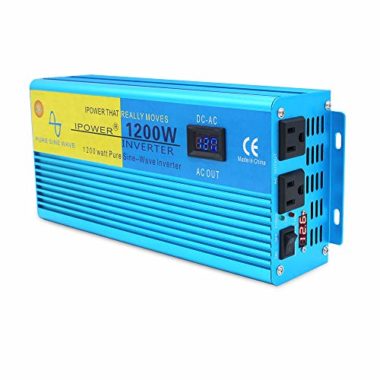
- Stand Out Features - Why We Love It
- An affordable true pure sine power inverter
- High-quality aluminum inductance and high gauge cables
- Replaceable fuses and four spare fuses provided
- Runs quietly and at >90% peak efficiency rating
- Two AC outlets and a fast charging USB port
- Backed by an 18-months warranty
Wave Form: Pure Sine
Continuous Power: 1200W
Peak Power: 2400W
Dimensions: 11.81 x 7.87 x 3.94 inches
Cantonape 1500W Pure Sine Wave
- Stand Out Features - Why We Love It
- Pure sine wave true power inverter
- Highly efficient with efficiency over 90%
- Powerful for inductive loads and safe for sensitive devices
- 6 types of safety features and replaceable fuses
Wave Form: Pure Sine
Continuous Power: 1500W
Peak Power: 3000W
Size: 12.6 x 5.9 x 2.76 inches
ProMariner True Power 2000PS Charger
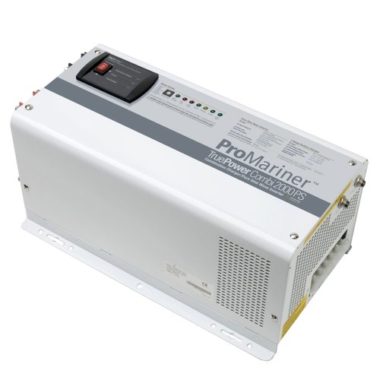
- Stand Out Features - Why We Love It
- An inverter and battery charger in one device
- Fully automatic with an instant AC transfer switch
- True power inverter yielding pure sine wave
- Battery charger has seven profiles and three stages
- True inverter runs efficiently and quietly
Wave Form: Pure Sine
Continuous Output: 2000W
Battery Capacity: 70 amps
Dimensions: 25 x 12 x 13 inches
How To Choose The Best Marine Power Inverter – Buying Guide
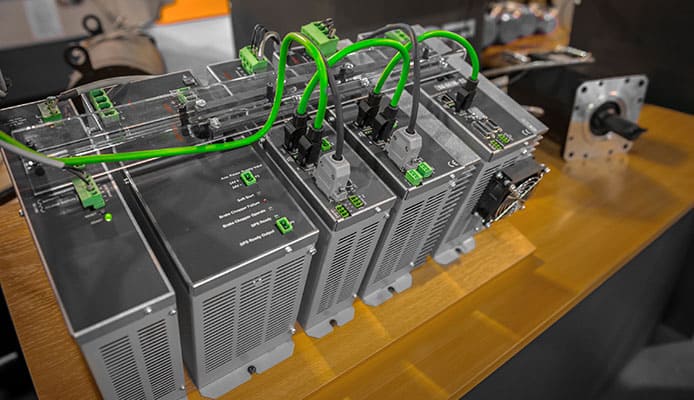
Continuous Wattage
A good power inverter is powerful enough to power all the devices you use on the water. The manufacturer will state the continuous wattage and peak wattage. The continuous wattage rating shows you how many appliances the charger is capable of running at the same time.
You can check the wattage on the devices you’ll be charging and sum the wattage to determine your power requirements. For appliances showing amps, you can covert these into watts by multiplying with volts. For example – 2 amps x 120 volts = 240 watts.
It’s always a good idea to buy a larger charger than your power sum to avoid overloading and also because marine inverters have about 90% efficiency. Of course, the best marine power inverters with higher wattage are going to cost more.
Wave Form
Inverters can have either be modified or pure sine wave forms. Modified sine wave inverters are generally more budget-friendly and a solid power source for most things. On the other hand, pure sine wave inverters have better efficiency power factor – they create more power and give out clean power similar to the one at home. This is why this type of waveform is recommended for more sensitive electronics to work properly.
You might also be interested in:
Other Features
Some additional features can make the boat charger both easier and safer to use. Some products have power, voltage and battery monitors. You can also get chargers with additional power outlets, and USB ports. Having an efficient cooling fan is also a good idea to prevent the charger from overheating and causing harm.
The inverter should be designed in such a way to control power surges so there is no damage to sensitive electronics like your computer, cell phone or stereo. An inverter that comes with a remote control panel offers greater convenience. Finally, there are inverter-chargers with battery chargers integrated – this means they can power-up the batteries when plugged with shore power or generator.
Batteries and Wiring
Inverters need a steady supply from the batteries to covert direct current to alternating current. They run on a 12V battery, and larger inverters drain a lot of power from your battery bank. So choose a good marine battery or powerful battery bank to run it and handle it according to manufacturer’s instructions to get the best life. You can buy a battery charger and plug to a shore power line or generator.
There are also engine alternators which can recharge the battery while the engine is running. Alternatives are solar panels or wind generators, or you can invest in an inverter with a charging function. When it comes to installation and wiring, you should follow the manufacturer’s instructions. Keep in mind that the inverter converts the DC power to 120V AC, which can cause electric shock and serious injury.
FAQs
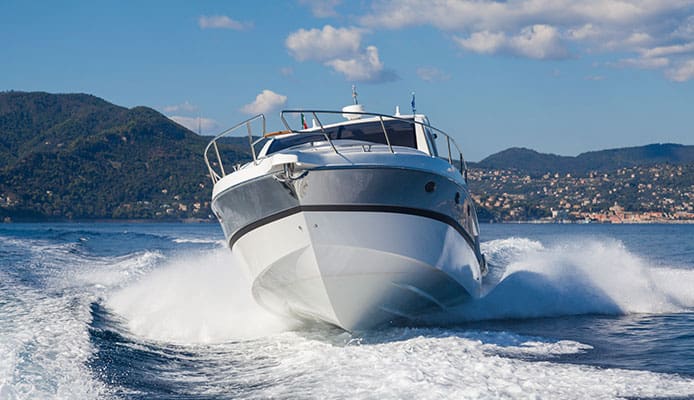
Q: What Do Power Inverters Do and How?
Power inverters use the 12V power from the marine battery to translate it to 120V AC which you can use for powering appliances on-board, when you head out to sea. Because it uses batteries to do this, if you don’t have some sort of backup system it’s a good idea to have separate batteries for this.
Q: Why Choose Marine Power Inverters over Auto Power Inverters?
Marine power inverters generally represent a higher quality power source, and a better choice for sensitive electronics. This is especially true for pure sine wave inverters.
On the other hand, auto power inverters are usually modified sine wave type. This is a more cost-effective charger solution, and they don’t have such high requirements as marine power inverters. They are used to power small devices through the car lighter jack.
Q: How Much Power Does an Inverter Need and How Much Does It Produce?
An inverter needs a 12V battery source. Larger inverters will drain the battery quicker, so it’s good to have more than one battery for this, or a charging solution. As for the power it produces, it can range from very small inverters with 100W output to large chargers which give out over 3000 continuous watts.
Q: Where Should the Inverter Be Installed?
General recommendation is to hardwire the inverter as near the battery banks as possible. The distance should be under 10ft, to avoid unnecessary power loss and voltage drops, as well as to reduce the chances of a hazard occurring. The place where you store it should be dry and ventilated (getting a waterproof power inverter for boat is a good idea), and this goes for storing the battery too.
Globo Surf Overview
Boat inverters present a very reliable AC power source to meet your power needs when you’re not docked. Investing in a good power inverter allows you to have a steady AC supply on board. Compared to a generator, inverter chargers don’t require fuel or an exhaust system and they’re more reliable than shore power. It comes down to your particular needs when choosing the best marine power inverter, but if you follow the guidelines we give here you won’t go wrong.



